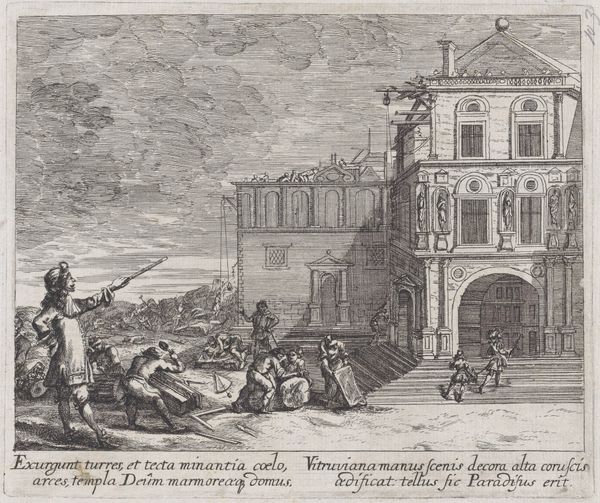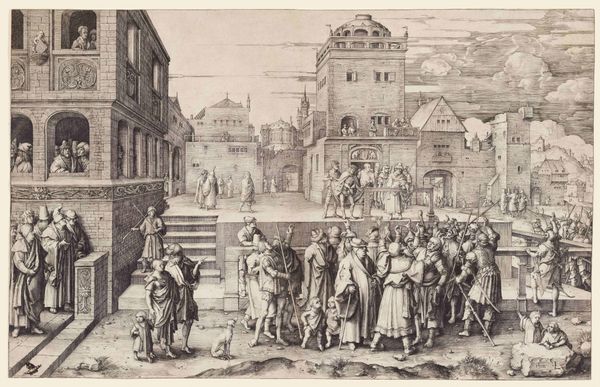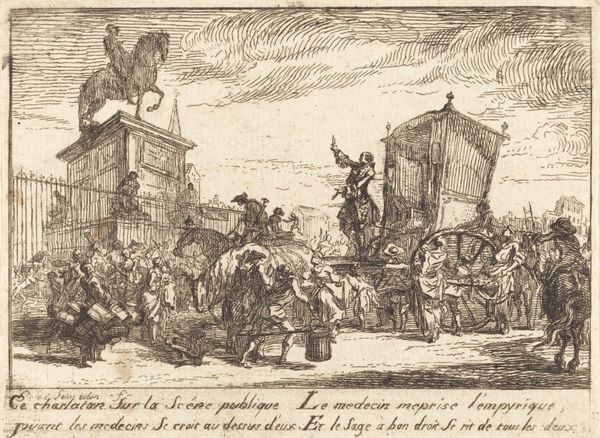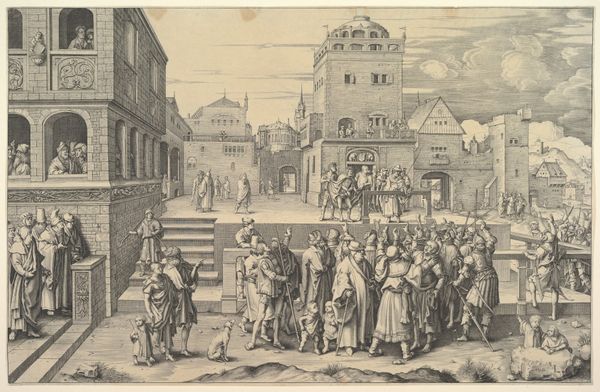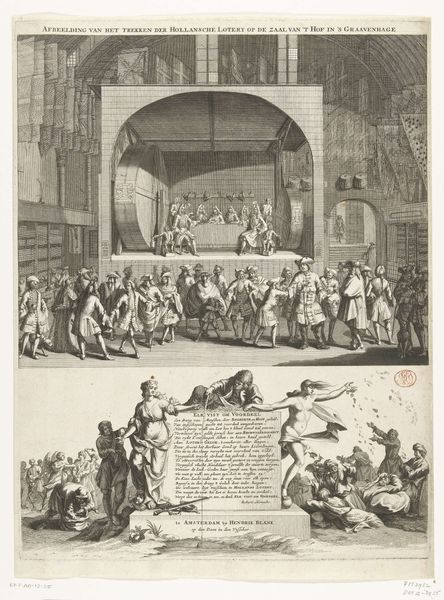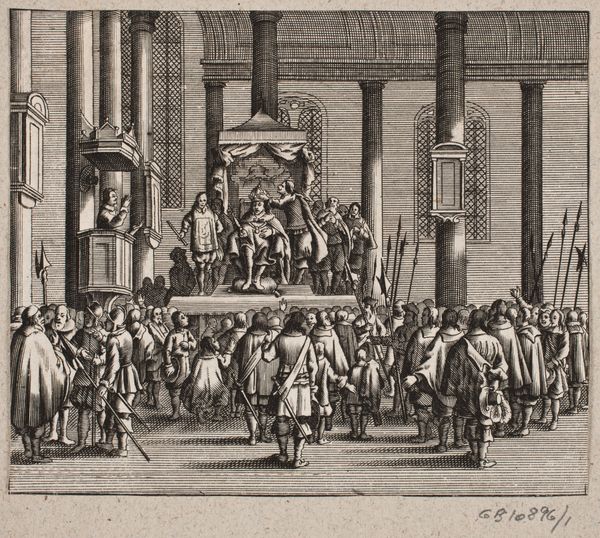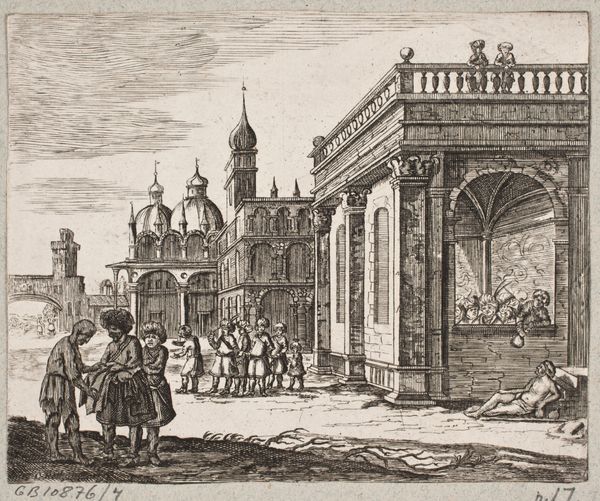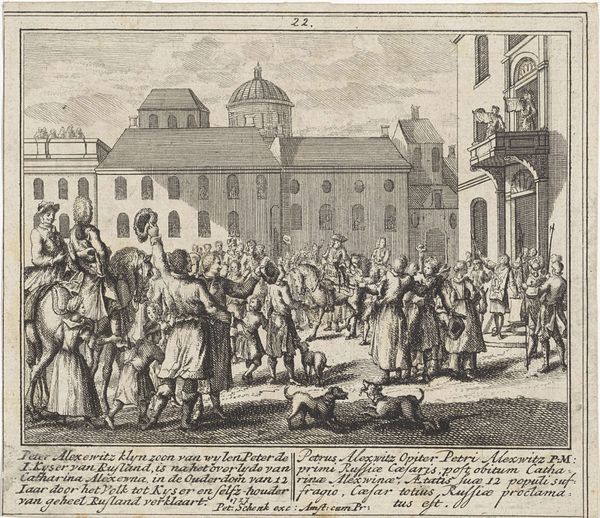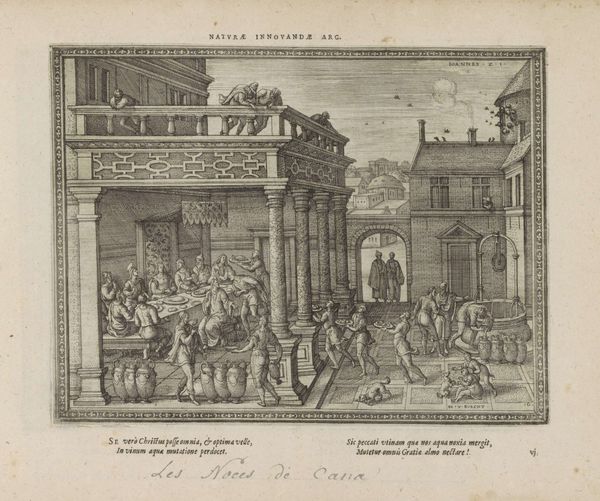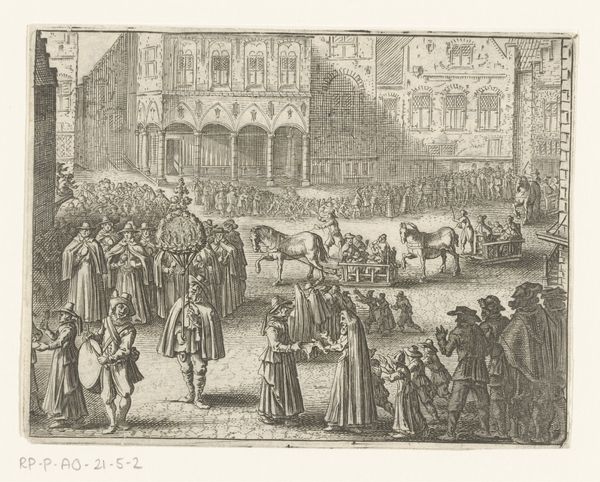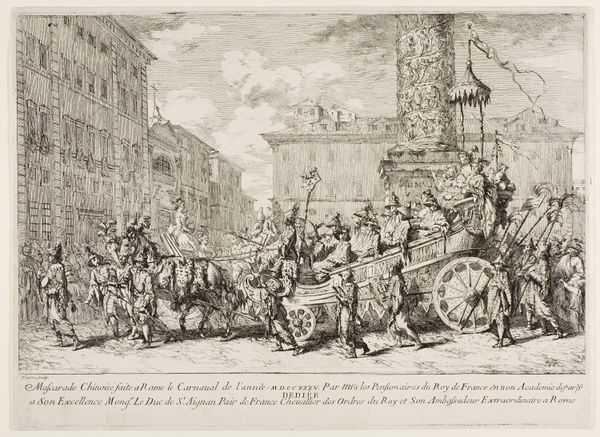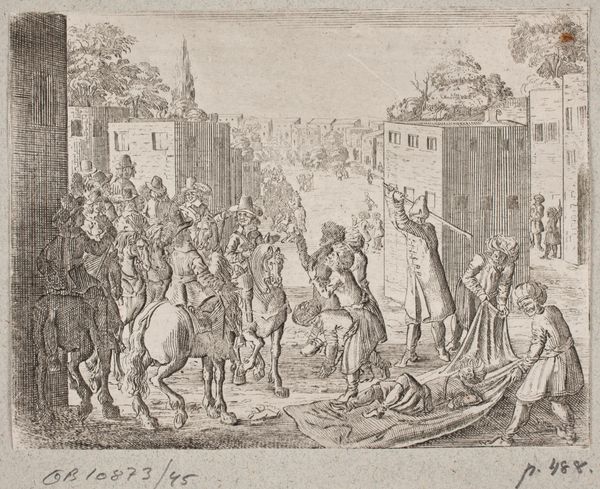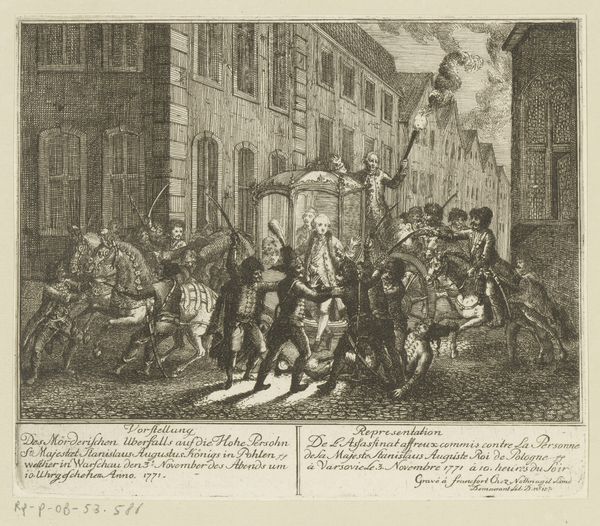
print, paper, engraving
#
baroque
# print
#
figuration
#
paper
#
line
#
cityscape
#
genre-painting
#
history-painting
#
engraving
Copyright: Public domain
This print, "Lame theatre" was etched by William Hogarth in 1724, a period of significant change in London’s cultural landscape. Hogarth’s image critiques the rising popularity of masquerades and foreign operas, contrasting them with the perceived decline of English theatre. The print depicts a street scene, with two theatres competing for attention. The "Academy of Arts" symbolizes the arrival of continental culture with its Italianate façade and statue of a performer, while on the left, the "Faux" masquerade represents foreign frivolity. Hogarth uses visual cues like the gaudily-dressed figures and the banner advertising a “masquerade” to convey the perceived superficiality of these entertainments. This print reflects the anxieties of a society grappling with cultural change, with the influx of new forms of entertainment threatening established artistic traditions. To truly understand the context, we can examine playbills, newspaper advertisements, and critical essays from the period. These resources would shed light on the debates surrounding cultural identity and the role of art in shaping it.
Comments
No comments
Be the first to comment and join the conversation on the ultimate creative platform.
